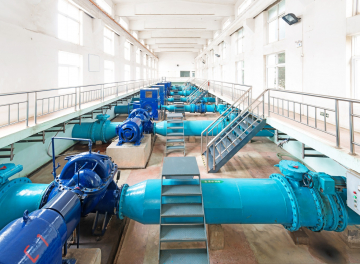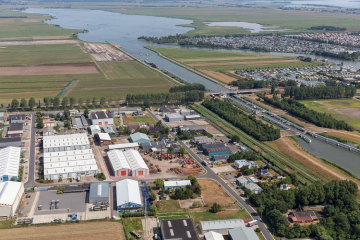Pop quiz! What are Per- and Polyfluoroalkyl Substances (PFAS) and why do they matter to you? If you’ve heard of them but aren’t really sure what they are, you aren’t alone. PFAS compounds have been part of commercial products and manufacturing for decades and have been increasingly linked with health and environmental risk, thus drawing increasing levels of public scrutiny and regulation.
The issues around PFAS are complex and there is a staggering amount of information out there that is updating all the time. To help bring clarity around a critical issue for businesses, we’ve created this PFAS FAQ guide. Don’t worry, there won’t be a quiz at the end.
Where Do PFAS Come From?
In the 1930s, a scientist developed new chemical compounds that would come to be known as PFAS. These compounds don’t occur naturally but are made up of chains of carbon-fluorine bonds, one of the strongest bonds in nature. In fact, they are so persistent that they are often called “forever chemicals.”
The first commercial application of PFAS was Teflon in the 1940s. Since the 1940s, PFAS have been used in thousands of commercial, industrial, and military applications all over the globe and they continue to be developed.
What Do PFAS Do?
PFAS is an umbrella term that covers thousands of chemicals with similar chemical structures. PFAS have some or all of the following properties:
- Repel oil, water, and other liquids
- Temperature resistance
- Friction reduction
- Stability and durability
PFAS are used in many products and applications including:
- Food packaging and non-stick cookware: They repel grease and keep food sealed. Microwave popcorn bags are a good example.
- Coating and Insulation: Think electrical wire coatings, mechanical wear reduction for metals, and paints for corrosion prevention.
- Fire fighting: Aqueous Film Forming Foam (AFFF) is used to fight hazardous flammable liquid fires.
- Clothing and textiles: Including waterproofed outerwear, stain-resistant carpets and textiles, and Personal Protective Equipment (PPE).
- Manufacturing processes: for industries such as semiconductor, plastics, composite resins, and more.
PFAS are part of thousands of products and manufacturing processes. Though some PFAS have been phased out, banned, or limited, others continue to be used in new product development globally.
What Are the Health Risks of PFAS?
The short answer is: there’s mounting evidence that some PFAS pose health risks but we don’t know everything yet. It is certain that PFAS enter the bodies of humans and animals in many different ways and then they stay there for a long time. The Agency for Toxic Substances and Disease Registry (ATSDR) highlights the following risks:
A large number of studies have examined possible relationships between levels of per- and polyfluoroalkyl substances (PFAS) in blood and harmful health effects in people. However, not all of these studies involved the same groups of people, the same type of exposure, or the same PFAS. These different studies therefore reported a variety of health outcomes. Research involving humans suggests that high levels of certain PFAS may lead to the following:
- Increased cholesterol levels
- Decreased vaccine response in children
- Changes in liver enzymes
- Increased risk of high blood pressure or pre-eclampsia in pregnant women
- Small decreases in infant birth weights
- Increased risk of kidney or testicular cancer
- PFAS have been found in human blood in studies worldwide.
Many other scientific and regulatory bodies cite similar risks. The emphasis here is risk, not definite cause and effect. We are sure that some PFAS chemicals are harmful, we just haven’t nailed down all the specifics yet.
Environmental Risk of PFAS
Environmental risks are just as difficult to determine as human health risks but there are several main concerns:
- PFAS easily get into water supplies and bodies of water but are very difficult to get out.
- PFAS can be taken up by plants and can build up in the bodies of fish and wild animals which could potentially also pose human health risk if consumed.
- PFAS aren’t naturally occurring so we just don’t know how they interact in natural systems.
- Safe disposal procedures are incredibly expensive and difficult to monitor since PFAS are able to spread quickly and at great distances from the source in so many different ways (e.g. air, water, soil leaching).
As with human health risk, environmental risks are still being assessed but the evidence is mounting that PFAS can be harmful to the environment. PFAS in drinking water continues to be an area of greatest concern.
What Are the Benefits of PFAS?
Because PFAS is an umbrella term that covers thousands of chemicals with many different properties, labeling PFAS as harmful across the board isn’t accurate. It’s like saying, “All sugary foods are harmful.” Sure, too much sugar isn’t good for our bodies, but would we really put a tablespoon of honey in the same risk category as a triple hot fudge sundae?
The bright side of the longevity and durability of PFAS is that if they are doing something beneficial, they’re doing it for a long time. PFAS are used in various ways in the manufacture of everything from take-out containers to airplanes. Some of the benefits include:
- They help products remain durable and stable so they don’t have to be replaced as often.
- They are used in safety equipment for many industries.
- They are key to putting out some of the most hazardous fires.
- They keep packaged food fresh and from soaking through the container.
- Some applications can be used to reduce carbon imprint or energy consumption.
The Special Case of Aqueous Film Forming Foam (AFFF)
AFFF is one of the best examples of the simultaneous risks and benefits of PFAS. After development in the 1960s, AFFF was quickly adopted to extinguish flammable liquid fires that are difficult or impossible to put out with other substances. AFFF saved lives, land, and property.
Unfortunately, AFFF soaks into the ground or runs off into bodies of water which leads to contamination of drinking water. AFFF has been linked with environmental and health hazards. So which is greater: the cost or the benefit? Legislation and regulations have been enacted at many different levels but there is not a consistent, global response to the use of AFFF to date.
The case of AFFF demonstrates the power and utility of PFAS and the risks. Once again, the properties that make it effective are the properties that also make it potentially hazardous.
The Future of PFAS and Your Business
Concerns about the health and environmental effects of PFAS have increased in recent decades across the globe and have even become a topic on mainstream, late-night talk shows. Bans, stricter safety measures, and other legislation have been ramping up quickly since the early 2000s. It’s clear that regulations and new legislation will eventually touch every industry.
Whether your business already has a plan in place to understand and manage PFAS or you need to get started, Antea Group can help. In order to assess where your business is now and prepare for the future, reach out to Antea Group about our PFAS Management Support services.
Watch Our PFAS Webinar On-Demand
Our PFAS experts present “The Current State of PFAS Regulation and Litigation: What You Need to Know” and learn about trends, litigation risks, and best practices to manage risks to your operations and reputation.
Watch HereWant more news and insights like this?
Sign up for our monthly e-newsletter, The New Leaf. Our goal is to keep you updated, educated, and even a bit entertained as it relates to all things EHS and sustainability.
Get e-NewsletterHave any questions?
Contact us to discuss your environment, health, safety, and sustainability needs today.










